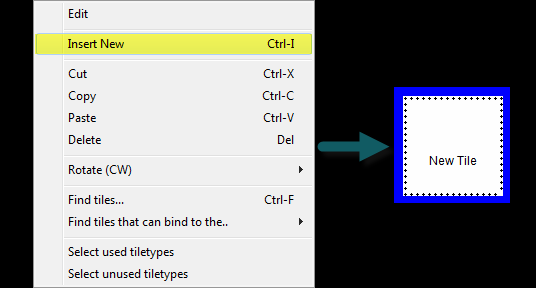Your first tile assembly
Introduction
Growth
An important concept in tile based assembly is how an assembly grows. In this tutorial you will be introduced to examples of the two major growth classes: undirected and directed. For our undirected system we will create a single-tile that when placed in the simulation space will grow in a random and undirected fashion. In response to the cancerous-blob we've created we will then build several new tiles that will act as a fence to encapsulate the blob. The fence tiles will be an example of a directed system. They will only grow where and as far as we want them to.
The Undirected Uni-tiled Blob
Before we can witness our Blob assembling in the Simulation Window we must first create a tile in the Tileset Editor window. Luckily because our Blob is a simpleton he consists only of a single tile. To create a tile right click in the Tiletype editor and select Insert New.
A tile will appear in the editor with a blue square around it. Whenever this blue square is around a tile in the Tiletype editor it means that this tile is currently selected and that you may edit its features in the Tile Type Definition window.
Now it is time to give your tile a name. I will call mine Hello World, but you may name your tile as you please. Strictly speaking, a tile name will not affect how your tiles will assemble. Tile names are simply a way for you to recognize and organize your tile sets.
